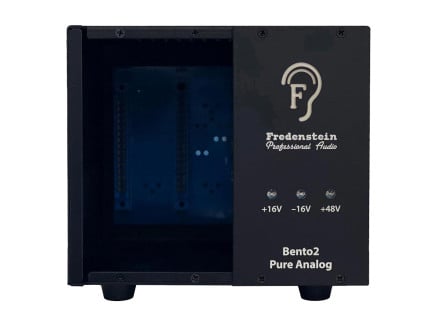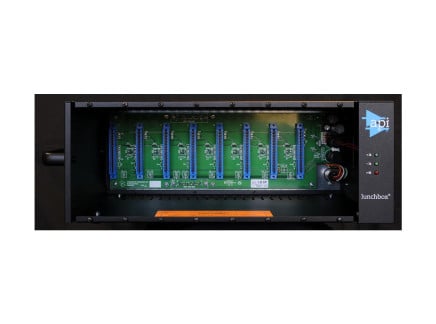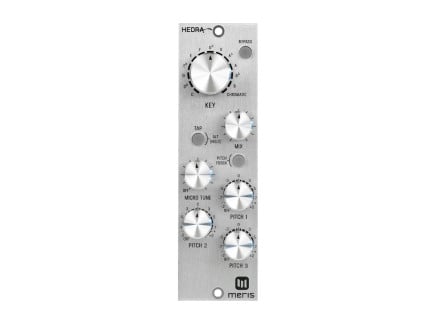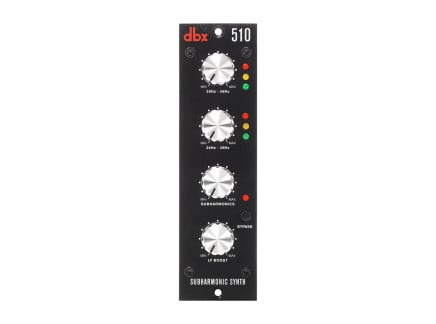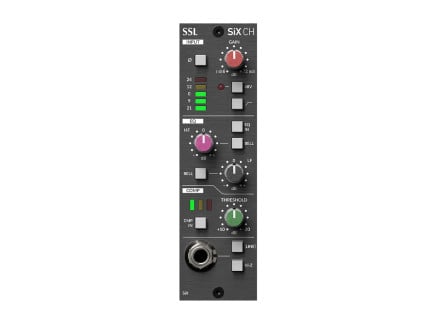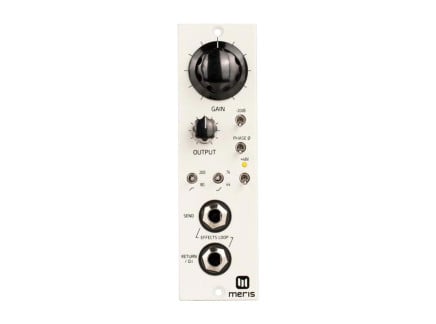As if there weren't enough reasons to thank API for their contributions to the professional audio community, they also pioneered the 500 series format. Originally introduced in the late 1960s, it is more popular today than ever.
The 500 series format is a standard for modular signal processing in recording studios. Originally, 500 series modular processing units were housed in large frame recording consoles. The thinking behind their design was that by being able to remove just part of a channel—say, an equalizer or a preamp—without having to remove the entire unit, maintenance would be easier.
In the mid 1970s, though, engineers started removing individual units from the consoles and mounting them in homemade chassis. Later in the decade the Datatronix company licensed the rights from API and created the first marketed standalone 500 Series chassis.
Today, that's a much more common approach. In modern studios—and even home studios—several 500 Series modules may be housed in a chassis, colloquially referred to as a “lunchbox.” The chassis provides signal routing and feeds power. But…why exactly would you want to do that?
Advantages of 500 Series Gear
So why would you choose to outfit your studio with 500 series gear in the first place? 500 series units offer a lot of advantages over full rackmount hardware and plugins.
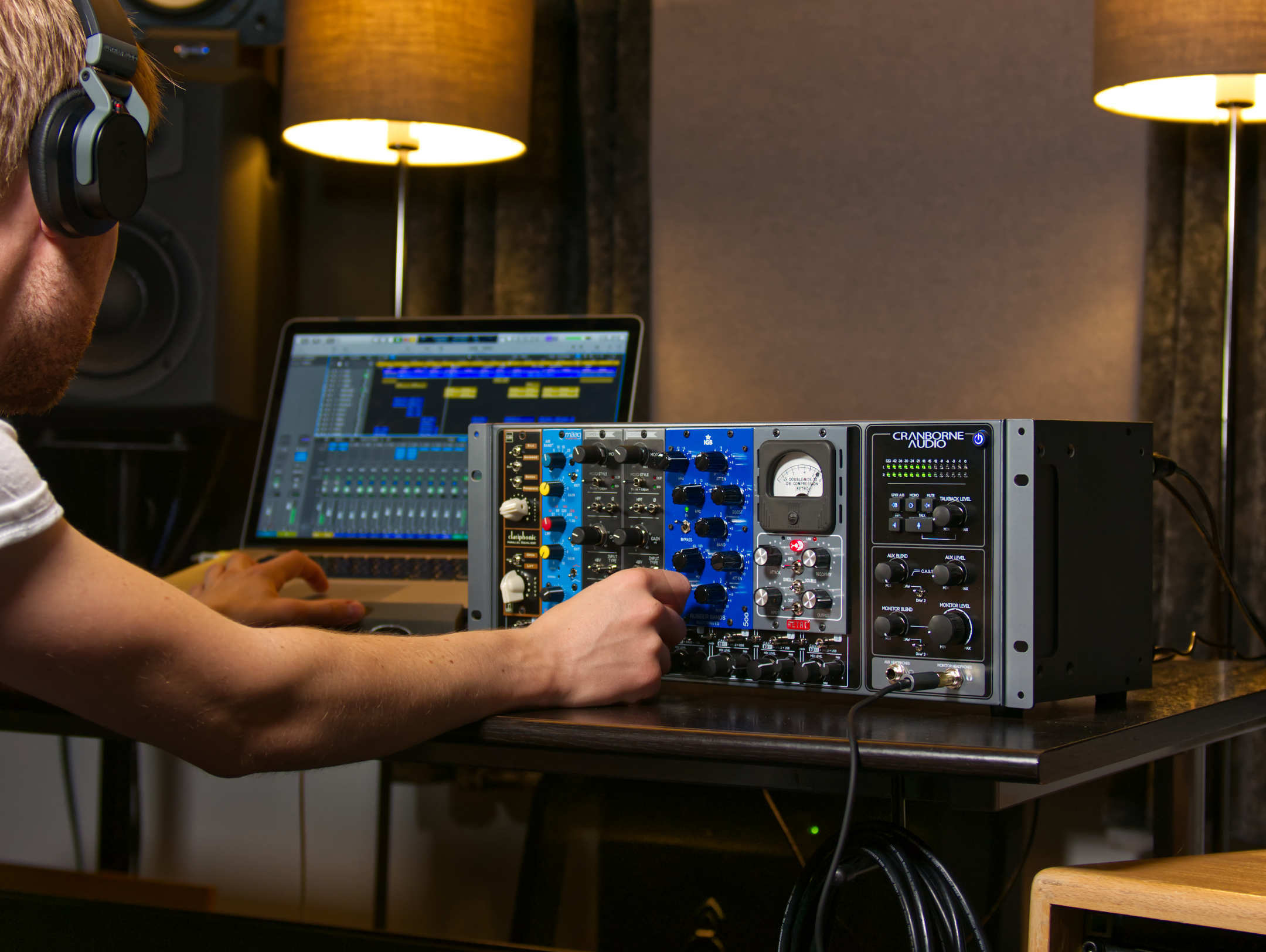
It’s true, plugins are generally much more cost effective than hardware. But there’s no denying the sonic qualities of outboard gear, and this is one of the biggest benefits of 500 series units. They’re also designed to be modular and customizable, so you can tailor your signal chain to your specific needs. As opposed to a unit like a channel strip where every part of the chain is made by the same manufacturer, 500 series units allow you to mix and match different types of processors to your specific tastes.
And of course, the modular approach means that you can get the true sound quality and performance of high-end studio consoles without needing to purchase an entire console. Because most home studios seldom need all of the affordances of a large console—and because they typically involve multitracking instruments one-by-one—using 500 series gear can be a serious way to upgrade your recording workflow without the potentially astronomical investment of a console, many of whose features you may not need.
Some models do come in at higher price points, but overall they’re a relatively affordable way to get into truly high-end, hi-fi recording gear. Since cost is one of the biggest impediments in the design of home studios, this is a huge benefit.
Disadvantages of 500 Series Gear
Like all gear, 500 series units have their disadvantages. Since they are hardware you’ll need to have a way to integrate them into your recording setup. A lot of home studios are outfitted with interfaces with small channel counts that might not even offer send and return I/O to integrate with hardware.
So if you want to create a hybrid setup where you’re working in and out of the box, you might be looking at an interface upgrade or purchasing one that offers the routing options you need. Alternatively, depending on your workflow, it may be possible to alleviate these problems using a patchbay—which can be quite affordable. (Check our our full article on patchbays for more information on that front!)
When it comes to comparing 500 series modules to plugins, most don’t offer a method of instant recall, though many do offer detented controls. This is a minor inconvenience, but if you need to come back to a track after you’ve moved on, don’t forget to document the settings you used on the 500 series units. Luckily, most DAWs come with a notes section where you can notate your settings and keep all the information in one place.
Types of 500 Series Processors
Almost every type of audio processor can be found in the 500 series format. And with them you can add some amazing circuits from some of the biggest professional audio manufacturers like API, Rupert Neve Designs, and Solid State Logic (SSL), just to name a few.
Since there are so many different models on the market it’s hard to find a type of processor that doesn’t come in the format. Naturally, there are studio staples like preamps, mono and stereo EQ, and compressors—but in recent years, even more creative options have emerged, such as effects like reverb and delay, pitch shifters, even DIs and signal routers.
In and Out of the Box
It’s widely known that hybrid recording setups offer the best of both the analog and digital worlds. But due to the smaller area home and project studio owners work with it can be unconventional or impossible to find space to properly accommodate 19” rack gear. 500 series gear provides the benefits of high-end sound and build quality without the need for an entire room full of racks.
500 series equipment offers a more ergonomic, expandable, and future-proof way to integrate hardware into their digital workflows. By using this type of processing, concerns about plugins becoming obsolete or needing updates to function properly become much less of an issue.
It also provides fairly easy integration with modern interfaces as long as they offer send and return routing.
500 Series and the Home Studio
Home studios are usually built piecemeal gradually, mostly due to budget. This is another area where 500 series units prove their value. You’re able to add hardware to your signal flow like preamps while still being able to rely on plugins like equalizers and compressors.
Home studios can generally operate with much smaller channel counts than larger facilities, and many can get by with only using a single channel at a time. This means you can use a single channel signal chain on other tracks as you record them.
With so many options of 500 series models available, it’s important to do the research and make sure you’re buying the right gear for your specific needs.
Integration Into Your Home Studio Setup
We touched on it earlier, but when you’re integrating 500 series hardware how you do it should be considered first.
Will you keep it in a rack or freestanding? They’re very convenient, but like all hardware gear they do take up a certain amount of space.
Signal flow and cable management is another topic, but due to the ergonomic nature of the way some lunchboxes are designed it shouldn’t be difficult to keep your cable management clean and simple. You also have to consider dust getting into unused slots, but you can solve this by using blank rack panels, which are very affordable.
Every digital audio workstation is different, so you’ll have to research how to set yours up with outboard hardware. This is usually a pretty simple process working with the send and return routing in the tracks on your digital audio workstation and interface.
Choosing a Chassis
When you’re first looking to add a 500 series rack to your recording setup it’s important to consider the chassis. This is the enclosure that houses each unit, and while it is a standard there are different features to look out for.
Due to their modular and expandable nature it can be difficult to know how many slots to go with. Since building a custom signal chain is the whole point, home studio owners often opt to build theirs over time instead of all once.
Chassis generally come with 2–10 slots and an included power supply that provides standard and phantom power for things like condenser microphones when it’s needed. But some sell the power supply separately, so be sure to research that when you’re shopping around. The best ones also offer isolated power regulation between the individual modules, and this is another consideration to keep in mind when choosing one.
Luckily, there is no shortage of options no matter how many slots you need. If you’re trying to keep the signal chain small, models like the Fredenstein Bento 2 two-slot and Radial Engineering Cubethree-slot models are a great starting point.
Lindell Audio makes chassis with a range of slots, from the three-slot 503POWER and six-slot 506POWERMK2 to the 510POWERMK2 10-slot. Since they invented the standard, the API 500VPR is a great 10-slot choice, and the Cranborne Audio 500ADAT offers ADAT integration. Radial Engineering's Workhorse Powerhouse is another solid 10-slot option.
Interesting 500 Series Units
Since there are now hundreds of 500 series units on the market, there’s no shortage of options when it comes to models that do some really interesting things. From more familiar brands like Neve, to smaller companies like Aphex and Fredenstein, the 500 series standard is a mainstay in studios big and small.
There are popular preamps and compressors, like the clean API 512C and the fat and warm 1073MPL from BAE, a take on one of the most classic preamps of all time—the Neve 1073. API’s 529 stereo compressor works just as well on drum overheads as it does on the master bus. And if you need a channel strip there is the SSL SiX Channel. They also make the Ultra Violet Stereo EQ, which is great on all types of buses.
You can add tape emulation through the Rupert Neve Designs 542 tape emulator, an effect normally reserved for plugins (this is one of our most popular 500 series modules altogether). They also have the 535 diode bridge compressor, a style of compression that’s not very common.
DBX has the 520 de-esser and 510 subharmonic synthesizer, and Meris makes some really cool models like the 440 guitar preamp and Mercury 7 reverb that offers unique controls most reverbs don’t, like pitch vector.
Lunch is Served
The 500 series is an extremely useful format. Designed to essentially be plug-and-play, it allows you to build out your dream signal chain without taking up too much space. Nothing in technology is completely future-proof, but considering how long the standard has been around and the amount of gear manufacturers that have adopted it, it’s doubtful it will be outdated anytime soon. In fact, it will probably just keep getting better.
In the second part of this series, we'll explore some thoughts about how to approach building your first 500 Series setup—stay tuned!
Brandon Stoner is a lifelong musician and audio engineer who owns more guitars than anyone needs. As a lover of all things writing and music technology, he crafts every piece with his dog Max on his lap.
Portfolio | LinkedIn | Twitter


